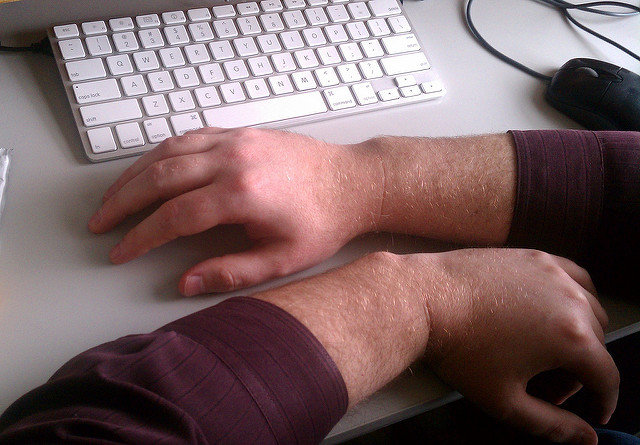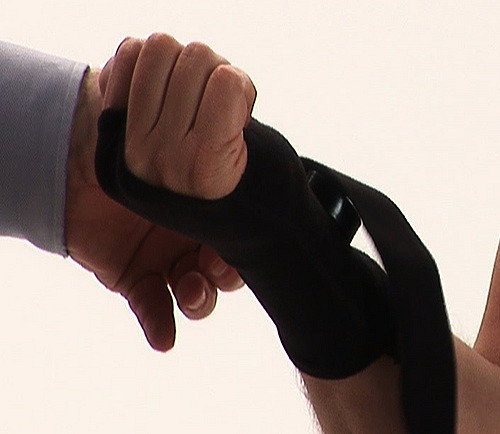RA in the Wrist: How Do I Know if I have Arthritis in My Wrist?
Rheumatoid arthritis (RA) is a chronic and progressive autoimmune disease that occurs when the body’s natural immune system “malfunctions” and begins to attack the healthy tissue lining the joints. While any joint in the body can be affected, RA often starts in the joints of the wrists and hands, progressing to other joints over time. In fact, the wrist is the most common site for RA in the upper body, and usually, both wrists are involved. According to the Arthritis Foundation, about 1.5 million people in the U.S. have rheumatoid arthritis, and the disease is about three times as common among women as among men.

What causes RA in the wrist?
The specific underlying cause of RA including the event that triggers the immune system to malfunction is not well understood. When the disease occurs, symptoms begin with an inflammatory response inside the joint caused by the attacking immune cells. This inflammation results in swelling and pain, especially when the joint is used. Eventually, the inflamed tissues inside the joint begin to thicken, creating increased friction inside the joint that exacerbates the inflammation and painful symptoms.

Without proper treatment, the cartilage that covers the ends of the bones inside the joint can begin to wear away, and the space between the bones become smaller. Over time, the ends of the bones become exposed and pain increases significantly. As the inflammation, swelling and damage continue, joint deformity often occurs.
What are the most common symptoms of wrist RA?
In the very early stages of the disease, RA can cause joint tenderness and mild stiffness that tends to fade away with movement. As the disease progresses, symptoms can include:
- redness or warmth in or around the wrist
- wrist pain, stiffness, and swelling that persists for a long period of time
- excessive joint stiffness in the morning, typically lasting for a half hour or more
- joint instability and decreased range of motion

Usually, both wrists are affected, and over time, the disease can spread to other joints. Widespread inflammation can cause other symptoms, like:
- dry mouth and an increased risk of gum disease
- dry, red eyes that are very sensitive to light
- shortness of breath due to lung involvement
- low levels of red blood cells, a condition called anemia
- blood vessel damage that can cause problems with the nerves, skin and other organs
Most people find their symptoms are worse in the morning and following periods of inactivity.
People with RA often experience periods when their symptoms become worse, called flares or flare-ups, followed by periods of remission when symptoms lessen.
Some symptoms of RA can be similar to osteoarthritis, a much more common type of arthritis that occurs as a result of joint wear and tear associated with aging, overuse, trauma or in a few cases, prior surgery. But while both OA and RA can cause stiffness and a limited range of motion in the affected joints, patients with RA tend to experience longer periods of stiffness in the joints when waking in the morning, and severe joint deformity is far more likely to occur. Patients with RA may also experience other symptoms related to their disease, including fatigue, fever, and loss of appetite, especially in the early stages.

What steps are used to diagnose RA in the wrist?
Diagnosis begins with an evaluation of the wrist, including palpation (gently feeling the wrist joint) and a range-of-motion evaluation to pinpoint the area of the joint where the pain is located. Diagnostic imaging will be ordered to evaluate and inspect the interior of the wrist joint and blood testing also may be performed. Blood tests can be useful in identifying specific antibodies associated with RA.
What treatments are available for RA in the wrist?
Rheumatoid arthritis is a chronic relapsing disease, and the joint damage it causes is irreversible. Because RA can cause significant joint damage and deformity fairly quickly, early and aggressive treatment is recommended. Treatment usually begins with conservative options like medications and therapy. Surgery can be helpful when these approaches no longer provide adequate relief. Nonsurgical treatment options are primarily aimed at reducing damaging inflammation and may include:
- medicines like non-steroidal anti-inflammatory drugs (NSAIDs) to relieve pain and inflammation
- corticosteroid injections to reduce inflammation inside the joint
- disease-modifying anti-rheumatic drugs (DMARDs) like methotrexate, or special medicines called biologics or JAK inhibitors designed to target specific portions of the immune response system
Often, these medications are accompanied by physical or occupational therapy to help relieve joint stiffness and improve mobility in the joint. Assistive devices like pens or utensils with special grips may also help patients maintain mobility and function.

When these options aren’t effective in relieving pain, or joint deformity is severe, surgery may be performed to remove damaged portions of the joint, to replace all or part of the joint, or in some cases, to fuse the joint together to prevent painful friction. The type of surgery that’s performed will depend on the patient’s symptoms, the extent of the joint damage, the patient’s overall health and personal treatment objectives, and other factors. Some types of surgery can be performed using minimally-invasive techniques that rely on very small incisions for less tissue damage and faster postop recovery.
Get medical help early
RA joint damage and deformity can be severe, and once it occurs, it cannot be reversed. The initial stages of deformity can begin early in the disease process, so being evaluated and getting care at the first signs of pain and stiffness is essential. No one knows what triggers RA, and while having a family history of RA can increase your chances of developing the disease, most people with RA do not have family members with the disease.
If you have joint stiffness, pain or other symptoms of RA, schedule an evaluation as soon as possible. And if you’ve been diagnosed with RA, be sure to see your doctor regularly and ask about new and emerging therapies that could help you manage your symptoms and slow disease progression.
